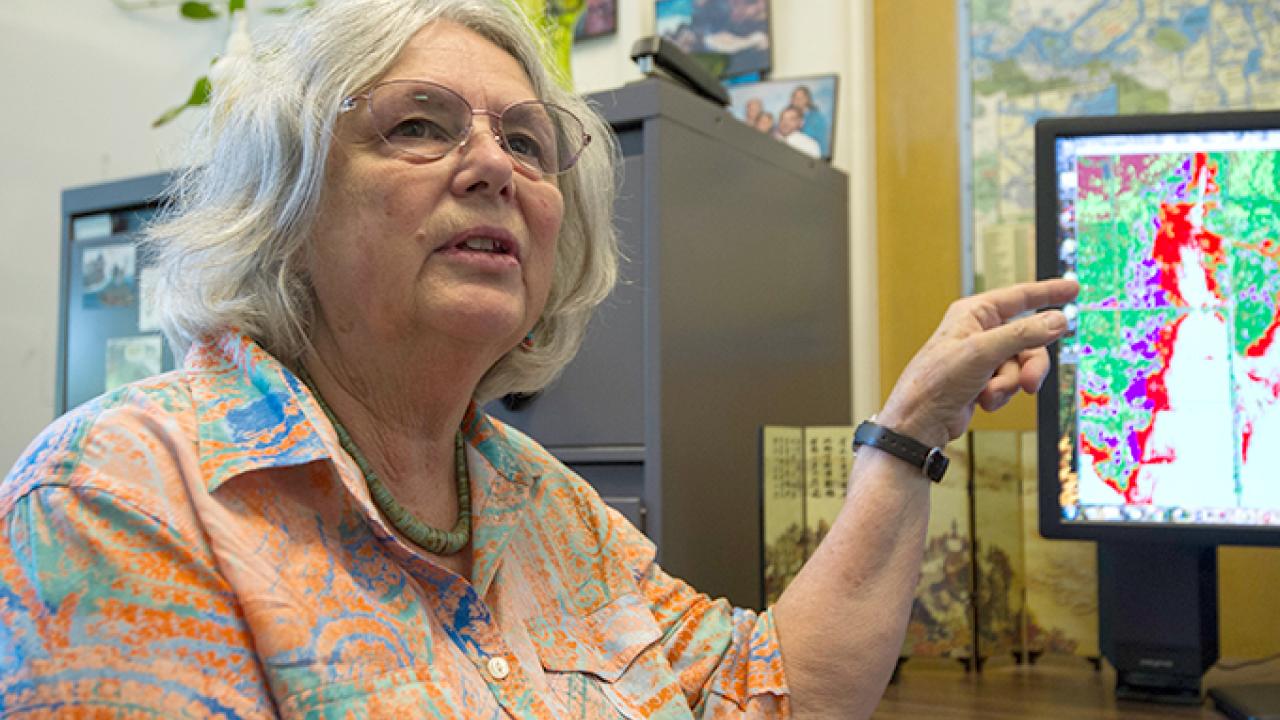
Remote Sensing Pioneer
AGU Fellows are recognized for their outstanding contributions to scholarship and discovery in the earth and space sciences. The 2017 class of fellows will be recognized December 13 at the organization’s fall meeting in New Orleans.
Ustin first started working with remote sensing technology in the early 1980s. “Most of my colleagues thought of remote sensing as just pretty pictures, not as real data,” she said.
Over the decades, however, environmental scientists have come to appreciate many applications of remote sensing. By making observations and taking measurements on a scale that can’t be captured by the human eye, remote sensing helps researchers understand the climate system, the carbon cycle, changes in land use, changes in water quality, and other areas.
“I always thought that getting measurements across a whole landscape would be the best way to understand what was going on in the environment,” Ustin said.
“Susan’s pioneering work in the development of remote sensing technologies to detect changes on the planet is internationally recognized,” said LAWR professor Ben Houlton, director of the John Muir Institute of the Environment. Ustin is associate director of research at the institute.
“Her scholarship has led to fundamental discoveries in everything from drought monitoring, fire detection, invasive species and ecosystem biogeochemical cycles through data collected from satellites, airplanes and drones,” Houlton added. “We are delighted that she is using this expertise to help lead our new emphasis in big environmental data.”